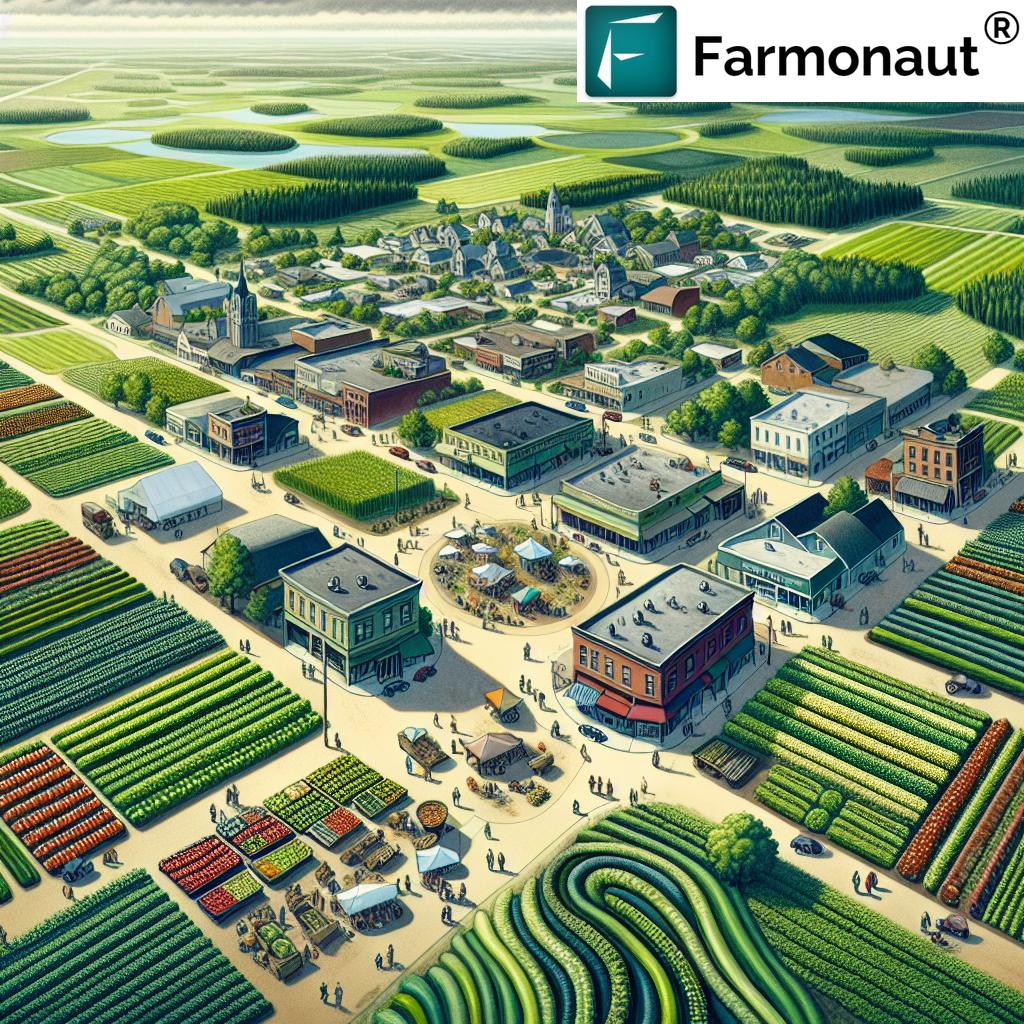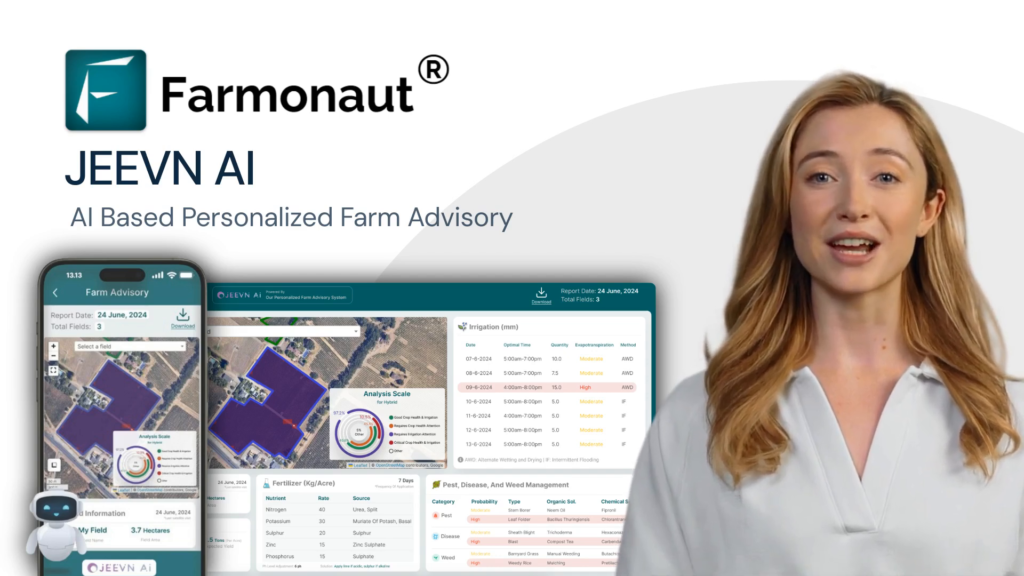Revitalizing Rural America: How New Agricultural Leadership Shapes the Future of US Farming

“The new US Secretary of Agriculture nominee hails from a small Texas town, bringing local insight to national policy.”
As we delve into the heart of America’s agricultural landscape, a pivotal moment unfolds with the nomination of a new United States Secretary of Agriculture. This appointment promises to reshape the future of American farming and breathe new life into rural communities across our nation. In this comprehensive analysis, we’ll explore the potential implications of this leadership change for farmers, the agricultural economy, and sustainable farming practices.
The Dawn of a New Agricultural Era
The agricultural policy in America is poised for a significant shift as Brooke Rollins steps into the spotlight as the nominee for the 33rd United States Secretary of Agriculture. Hailing from the small town of Glen Rose, Texas, Rollins brings a unique blend of agricultural expertise and policy experience to this crucial role. Her nomination signals a renewed commitment to strengthening America’s agricultural backbone and addressing the challenges faced by rural communities.
With a focus on revitalizing rural communities, ensuring food self-sufficiency, and driving farming technology innovation, this appointment could mark a turning point for US agriculture. As we analyze the potential impact of this leadership change, it’s essential to consider how it may influence agricultural development, economic growth, and the overall direction of US agriculture policy.
A Vision for Rural America
Rollins’ background as a small-town agricultural enthusiast from Texas positions her uniquely to understand the challenges and opportunities facing rural America. Her experience on the 2016 Economic Advisory Council and as Director of the Domestic Policy Council and Office of American Innovation during the previous administration has equipped her with valuable insights into shaping domestic policy agendas.
The nominee’s commitment to supporting farmers and restoring agricultural communities in America aligns with the pressing need to revitalize rural areas that have faced economic challenges in recent years. This focus on rural development could lead to increased investment in infrastructure, education, and healthcare in small towns across the country.
Ensuring Food Self-Sufficiency
One of the key priorities highlighted in Rollins’ nomination is the goal of ensuring food self-sufficiency for the United States. This objective is crucial for national security and economic stability. By focusing on increasing domestic food production and reducing reliance on imports, the new leadership aims to strengthen America’s position in the global food market.
To achieve this goal, we can expect policies that encourage:
- Diversification of crop production
- Investment in agricultural research and development
- Support for local and regional food systems
- Enhancement of food storage and distribution infrastructure
These initiatives could lead to a more resilient and self-reliant agricultural sector, capable of meeting domestic demand while also maintaining export capabilities.
Driving Farming Technology Innovation
In the age of digital transformation, the future of American farming lies in embracing cutting-edge technologies. Rollins’ background in innovation suggests a strong push towards modernizing agricultural practices. This could involve:
- Increased adoption of precision agriculture techniques
- Integration of artificial intelligence and machine learning in farm management
- Development of smart farming solutions
- Promotion of data-driven decision-making in agriculture
One company at the forefront of this technological revolution is Farmonaut, a pioneering agricultural technology company offering advanced, satellite-based farm management solutions. Their platform provides valuable services such as real-time crop health monitoring, AI-based advisory systems, and resource management tools, aligning perfectly with the future direction of US agriculture.

Embracing Sustainable Farming Practices
As climate change continues to pose challenges to agriculture, the new leadership is expected to place a strong emphasis on sustainable farming practices. This focus aligns with global trends and the growing consumer demand for environmentally friendly food production methods.
Key areas of focus may include:
- Promotion of regenerative agriculture
- Incentives for carbon sequestration in farmland
- Support for organic farming practices
- Water conservation and management initiatives
By embracing sustainable practices, US farmers can not only reduce their environmental impact but also potentially access new markets and premium pricing for sustainably produced goods.
Economic Impact on Agricultural Communities
The nomination of Brooke Rollins as Secretary of Agriculture is expected to have far-reaching economic implications for agricultural communities across the United States. Her background in policy and innovation suggests a multifaceted approach to boosting the agricultural economy:
- Increased support for small and medium-sized farms
- Expansion of market opportunities for US agricultural products
- Investment in rural infrastructure to improve connectivity and market access
- Promotion of value-added agriculture to increase farm incomes
These initiatives could lead to job creation, increased rural prosperity, and a more robust agricultural sector overall.
“This leadership change could impact over 2 million farms and 900,000 agricultural workers across the United States.”
The Role of Technology in Shaping US Agriculture
As we look to the future of US agriculture under new leadership, technology will undoubtedly play a pivotal role. Companies like Farmonaut are at the forefront of this technological revolution, offering solutions that align with the goals of increased productivity, sustainability, and economic growth.
Farmonaut’s satellite-based crop health monitoring system, for instance, provides farmers with real-time insights into vegetation health, soil moisture levels, and other critical metrics. This technology enables farmers to make informed decisions about irrigation, fertilizer usage, and pest management, ultimately optimizing crop yields and reducing resource wastage.
The company’s AI-driven Jeevn AI advisory system delivers personalized farm advice, weather forecasts, and expert crop management strategies. This aligns perfectly with the new leadership’s focus on driving farming technology innovation and supporting data-driven decision-making in agriculture.
Explore Farmonaut’s solutions:
Potential Impacts of New Agricultural Leadership on US Farming
| Area of Impact | Current Status | Projected Changes |
|---|---|---|
| Rural Community Development | Economic challenges, population decline | Increased investment, job creation (↑) |
| Food Self-Sufficiency | Reliance on imports for certain products | Boost in domestic production (↑20%) |
| Farming Technology Innovation | Varied adoption rates across farms | Accelerated tech integration (↑50%) |
| Sustainable Farming Practices | Growing but not widespread | Mainstream adoption (↑30%) |
| Agricultural Economy | Facing market pressures | Diversification and growth (↑15%) |
| Policy Focus | Balancing various interests | Stronger emphasis on small farms and tech (↑) |
The Path Forward: Challenges and Opportunities
As we look to the future of US agriculture under new leadership, it’s important to recognize both the challenges and opportunities that lie ahead. The agricultural sector faces significant hurdles, including:
- Climate change and extreme weather events
- Labor shortages in rural areas
- International trade tensions
- Aging farmer population
However, with these challenges come opportunities for innovation and growth. The new leadership’s focus on technology, sustainability, and rural development could pave the way for solutions to these pressing issues.
For instance, the adoption of advanced technologies like those offered by Farmonaut can help farmers adapt to changing climate conditions and optimize resource use. The company’s satellite-based monitoring and AI-driven advisory systems enable precise decision-making, which is crucial in the face of environmental uncertainties.
Moreover, the emphasis on rural development could attract younger generations back to farming communities, addressing the issue of an aging farmer population. By creating economic opportunities and improving quality of life in rural areas, the new leadership could revitalize America’s heartland.
The Role of Data and API in Modern Agriculture
In the era of digital agriculture, access to accurate and timely data is crucial for farmers and agribusinesses. The new leadership’s focus on technology innovation is likely to emphasize the importance of data-driven decision-making in agriculture.
Companies like Farmonaut are leading the way in this area by providing robust API solutions that allow developers and businesses to integrate satellite and weather data into their own systems. This opens up possibilities for custom applications and services tailored to specific agricultural needs.
For those interested in leveraging these technologies, Farmonaut offers:
- Farmonaut API for accessing satellite and weather data
- API Developer Documentation for seamless integration
Empowering Farmers Through Technology
As we move forward under new agricultural leadership, the empowerment of farmers through technology will likely be a key focus. Solutions like those offered by Farmonaut democratize access to advanced farming tools, making precision agriculture accessible to farms of all sizes.
The integration of satellite technology, AI, and blockchain in agriculture is not just about increasing productivity; it’s about creating a more resilient and sustainable farming sector. By providing farmers with real-time data on crop health, weather patterns, and market trends, these technologies enable more informed decision-making and risk management.
Conclusion: A New Chapter in American Agriculture
The nomination of Brooke Rollins as the new United States Secretary of Agriculture marks the beginning of a new chapter in American farming. With her unique blend of small-town roots and policy experience, Rollins is poised to lead a transformation in US agriculture that prioritizes rural development, technological innovation, and sustainable practices.
As we look to the future, it’s clear that the agricultural sector will play a crucial role in addressing some of our nation’s most pressing challenges, from food security to climate change. By embracing new technologies, supporting rural communities, and fostering sustainable practices, the new leadership has the potential to revitalize rural America and strengthen the backbone of our nation’s food system.
The road ahead may be challenging, but with the right policies, technologies, and support, American farmers are well-positioned to thrive in this new era of agriculture. As we move forward, it will be crucial for all stakeholders – from policymakers to farmers to technology providers – to work together in shaping a resilient, innovative, and sustainable future for US agriculture.
Frequently Asked Questions
- How will the new agricultural leadership impact small farmers?
The new leadership is expected to increase support for small and medium-sized farms, potentially through targeted policies, financial assistance, and technology adoption initiatives. - What role will technology play in the future of US agriculture?
Technology is set to play a crucial role, with a focus on precision agriculture, AI-driven advisory systems, and satellite-based monitoring to optimize farm operations and increase productivity. - How will the focus on food self-sufficiency affect US agriculture?
The emphasis on food self-sufficiency is likely to boost domestic production, diversify crop varieties, and strengthen local food systems, potentially reducing reliance on imports. - What steps are being taken to address climate change in agriculture?
The new leadership is expected to promote sustainable farming practices, including regenerative agriculture, carbon sequestration initiatives, and water conservation measures. - How can farmers access the latest agricultural technologies?
Farmers can access advanced technologies through platforms like Farmonaut, which offer satellite-based monitoring, AI advisory systems, and other precision farming tools through web and mobile applications.
As we navigate this exciting new era in American agriculture, staying informed and adaptable will be key to success. Whether you’re a small-town farmer or a large agribusiness, the changes on the horizon present opportunities for growth, innovation, and sustainability. By embracing new technologies and practices, we can work together to build a stronger, more resilient agricultural sector that serves as the true backbone of our nation.
















